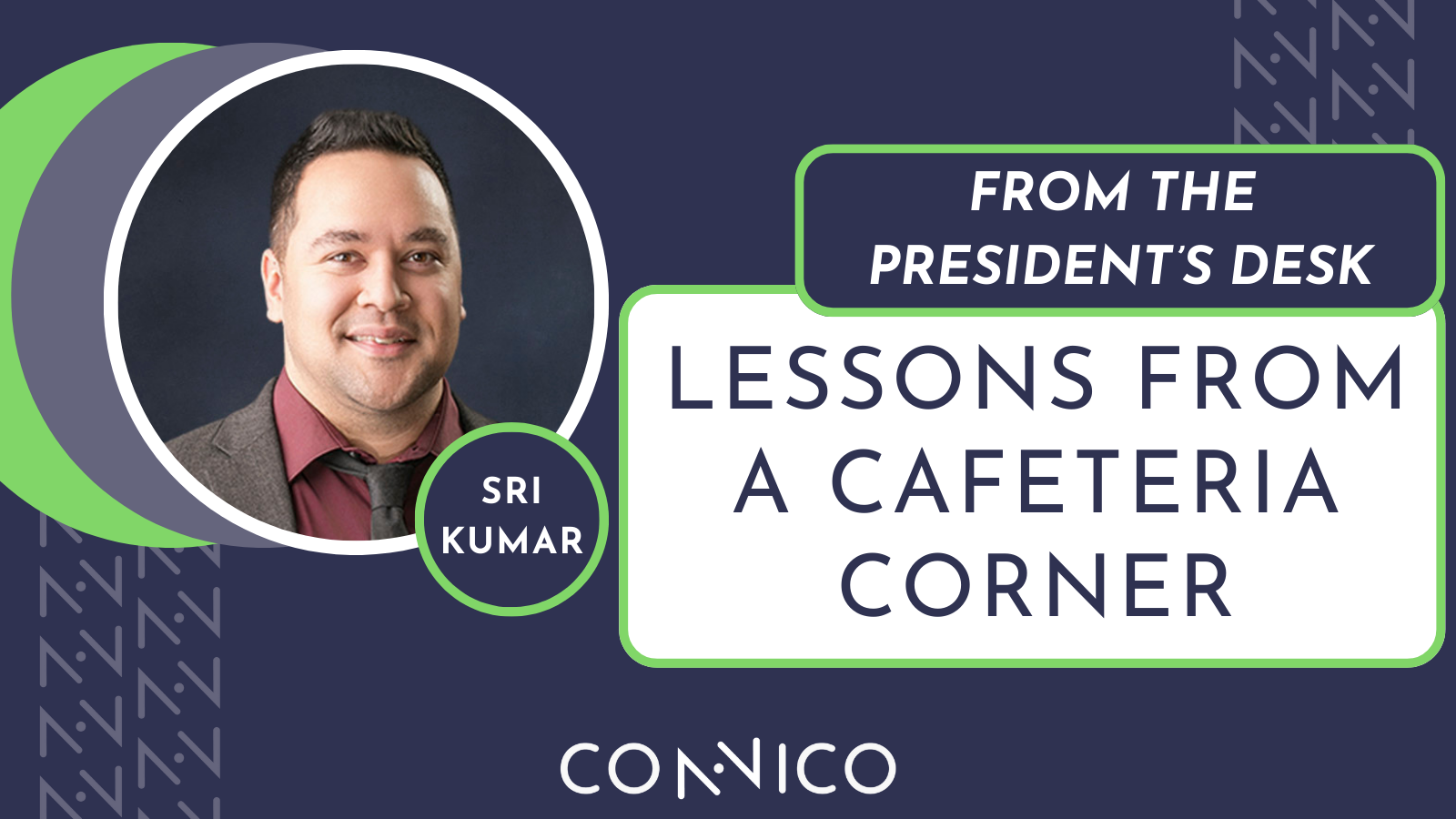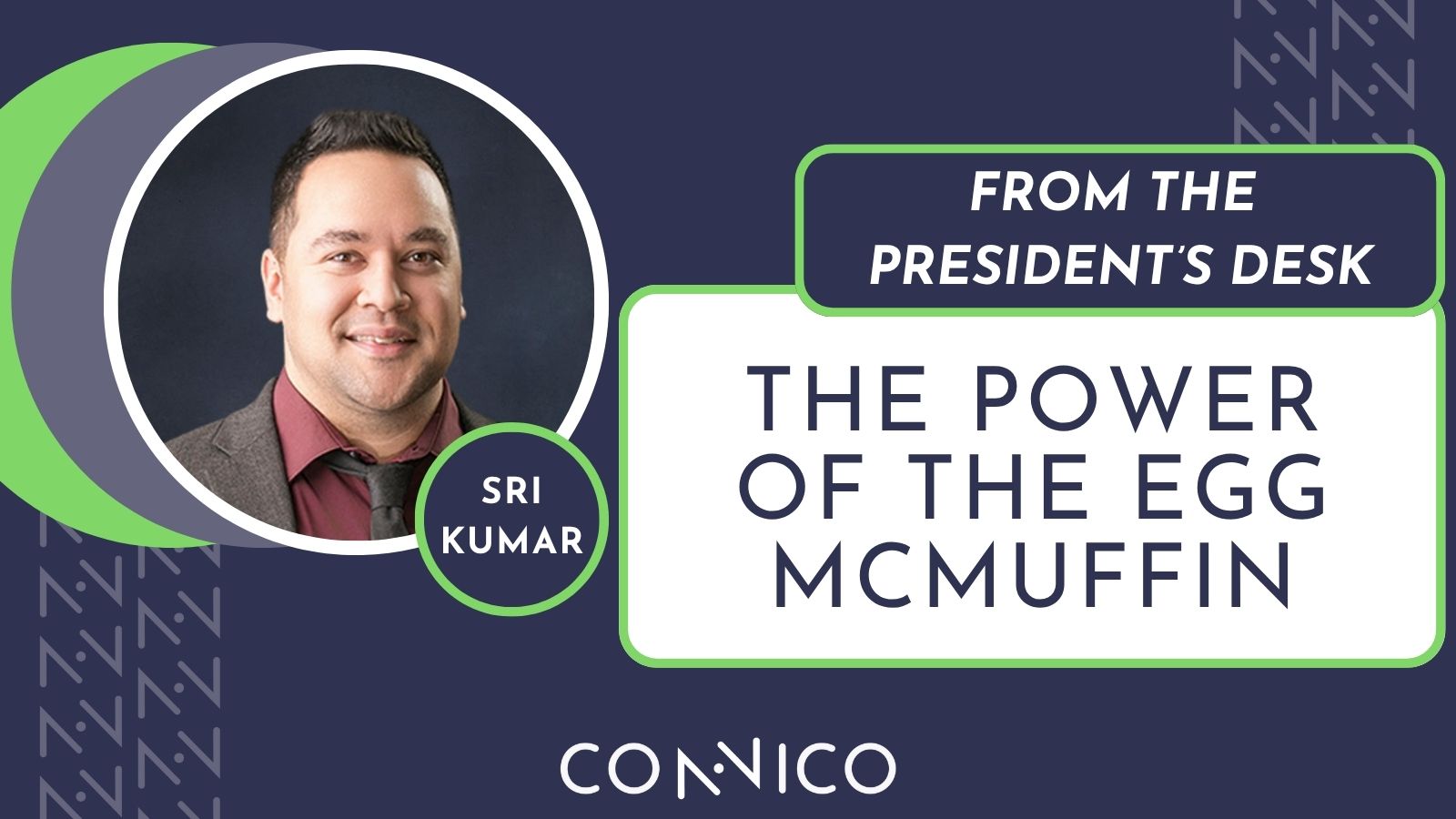From the President’s Desk: Lessons from a cafeteria corner

As my wife and I recover from a couple of minor joint surgeries, I’ve spent a little more time than usual inside hospitals. I’ve started to schedule our appointments with one important factor in mind: whether or not the cafeteria is open.
Eating in a cafeteria thrills me because you can pick ANY food you want – no dishes and no cooking required! As a kid, I recall the school cafeteria options seeming endless: from pizza to tacos and everything in between. As an adult with a wallet, grown-up options like spinach salad and sesame chicken turn a cafeteria into a playground.
Eating in a hospital cafeteria takes the excitement up a notch because you’re eating next to providers who are excellent at their jobs and must be excellent in everything they do. The cafeteria workers, security, and visitors have to be just as careful. Mistakes here, even ones as small as a microbe, can cost a life. It’s humbling to coexist with these folks and to sit (literally) at their table!
Each time I sit at one of those long, plastic tables, I’m reminded of all the cafeterias I’ve eaten in over the years. Like many American kids, I ate in one every day of school for 15 years (not counting field trips), and my experience was, shall we say, not always positive! I’ve eaten in cafeterias when traveling, trying to find a quick and convenient meal while navigating unfamiliar customs. I’ve eaten in them after job interviews and shadowing in far-off towns, nervously fretting as a surprising number of others appear to do the same. I’ve eaten in them between my QuizBowl team’s trivia contest filmings – just like any other kid!
So, what makes the hospital different?
At a hospital, saving lives is dependent on everyone in the building. We’ve all seen the intense scrub-in procedures that surgeons, donning their green-blue gowns, go through on TV. But have you ever thought about everyone else in a hospital who needs to be just as thorough, who needs to care just as much as the doctors?
The support team working in the operating room is one example. Each tool needs to be carefully accounted for; each vital sign of the patient needs to be precisely – and constantly – monitored. But, it goes deeper: even the janitorial staff must be completely on point for things to go well. This level of trust and 100% accountability from top to bottom is one that many organizations find difficult to reach.
In hospitals, it’s easier to see the importance of doing a good job because of how clearly it ties to saving lives: if you don’t do good work, a patient may literally not survive. The stakes of our work in engineering and infrastructure are just as important. Think of the six people who died during the 2018 collapse of the Florida International University pedestrian bridge, the 13 killed in 2007’s I-35 bridge collapse in Minneapolis, or the 236 lives lost during the roof collapse of the Jet Set nightclub in April 2025. This is serious stuff.
Building infrastructure has real meaning because people rely on it daily. Everyone involved at each stage of the process has a part to play. Whether you’re the person checking the CADD files, the person stamping the plans, the person funding the project, or the person pouring the concrete – YOU have a say in how many lives a project protects. Just as the surgeon is only one small piece of a hospital’s success, engineers count on more than designers or architects. We have truckers, construction crews, and plant operators to thank as well. Whether it’s a port, bridge, highway, or airport runway, our work spends its life cycle protecting humanity. That’s why we’re here.
Sometimes, when we’re showing up for another day on another project, it can feel like our work does not have an impact. If you ever feel that way, eat lunch at a hospital cafeteria. Your dollars will benefit a good cause, and you may leave with more than a tray of food.



